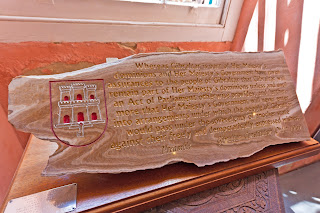With the 2022 World Cup in Qatar about to go underway, it can not be helped but to look back to the 2018 World Cup in Russia. This was the first time in decades the whole of England felt like the trophy could be in touching distance again. Gareth Southgate’s Lions done the unthinkable and made it to the final four, with an early goal from Trippier in the 5th minute of the game the countries spirits were high. But sadly this wasn’t to last, Croatia won in extra time finishing our World Cup dreams that year with a 2-1 loss and 4th place in the tournament.[1]
To remember what it was like for England to win, you’ve got to go
back to the summer of 1966, July 11th until July 30th, Not
only did the English Lions get to lift the trophy at the end, it was on home
ground at none other than Wembley Stadium.
The stage was set from the start with the games themselves being
declared open by her majesty, Queen Elizabeth II herself.[3] The
World Cup had already been broadcasted to television since 1954, and with the
bettering economy in England after World War 2, it meant that a lot of homes
across the country could watch from the comfort of their own homes in 1966.[4] It
was an eventful tournament from the offset, North Korea qualified for their
first World Cup as extreme underdogs, Playing most of
their games in Middlesbrough’s Ayresome Park, the Asian side became idolized by
the locals after passing through the group stage with by beating the two-time
world champions Italy.[5]
England’s final test of the event was the final
against West Germany in Wembley Stadium on Saturday the 30th of July,
the game was filled with highs, lows and controversy, what more could you want
from a World Cup final? With 96,924 in attendance at Wembley and an estimated 32.3
million Brits watching or listening to the broadcast and a further 400 million
people globally[6] it was going to be heard
around the world. West Germany got on the board first in the 12th
minute, with a goal from Haller, it was answered 6 minutes later by Geoff Hurst
in the 18th minute to make it 1-1. The game remained tied until the
second half when Martin Peters scored in the 78th minute. Against
all, the Germans rallied and equalised in the 89th, sending the game
to overtime 2-2.
Going into overtime, every fan’s worse nightmare, but
the Lions were ready. Probably the most controversial goal and call in World
Cup history, Hursts 2nd goal making it 3-2, bouncing off the crossbar
and onto the goal line.
 |
| The controversial goal itself. |
Finally, in the 120th minute Hurst scores
his third goal to seal the deal, also making him the only player in FIFA
history to score a hattrick in a World Cup final. Then at last, it finally came
home, will 2022 be a repeat?
[1] “2018
FIFA World Cup Russia™.” 2022. His Highness the Amir and FIFA President
Visit Doha Exhibition Centre. FIFA. Accessed November 1.
https://www.fifa.com/tournaments/mens/worldcup/2018russia.
[2] World
Cup Poster 1966. 2022. FIFA. FIFA. Accessed November 1, 2022.
https://www.fifa.com/tournaments/mens/worldcup/1966england.
[3] What
Made England so '66? FIFATV. Accessed November 1, 2022.
https://www.youtube.com/watch?v=Q5qB6PXQ06k
[4] Chisari,
F. “When Football Went Global: Televising the 1966 World Cup.” Historical
Social Research 31, no. 1: 42–54. Accessed November 1, 2022.
https://www.jstor.org/stable/20762101.
[5] BBC
Sport, ‘The Story of the 1966 World Cup’ 16 May 2014 https://www.bbc.co.uk/sport/av/football/27392991 Accessed November 1, 2022
[6] Chisari, F.
“When Football Went Global: Televising the 1966 World Cup.” Historical
Social Research 31, no. 1: 42–54. Accessed November 1, 2022.
https://www.jstor.org/stable/20762101.
[7] Panther,
L. “England's 1966 Heroes Reunited at Wembley on World Cup Triumph's 50th
Anniversary.” Mirror, July 30, 2016.
https://www.mirror.co.uk/sport/football/news/englands-1966-heroes-reunited-wembley-8530654.













